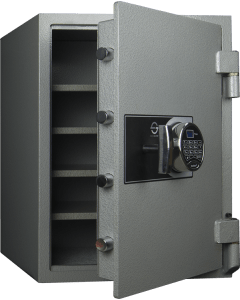
The Australian medical supplies and pharmaceutical market has grown remarkably, with billions of medical devices now common in different facilities. Safeguarding medical supplies, devices, and other confidential patient information requires compliance with specific security standards.
Due to the delicate nature of medical devices, pharmaceutical supplies, and patient information, storage presents a unique storage challenge. If you are in the medical industry, here are insights into Australia’s compliance and security standards for medical safes. Understanding these standards will help you find the right safe for your business.
The Existing Regulatory Framework
The Medicines, Poisons, and Therapeutic Goods Regulations of 2008 and the Drugs, Poisons and Controlled Substances Regulations of 2017 provide precise regulations that should help design drug safes. At the state level, there are laws that offer clear guidelines on how medical safes should be designed in full compliance with the set standards.
Medical facilities and installations that fail to meet these standards can be condemned as unsafe by the government.
Australian Poisons and Therapeutic Goods Regulations Act -2008
According to the Australian Poison and Therapeutic Goods Regulations Act -2008, all drug safes used for the purpose of storing dangerous and addictive drugs must meet specific compliance standards. Such drugs include all schedule S8 medication. The regulations apply to most jurisdictions within Australia, with the exception of Queensland and Western Australia.
Some of the key compliance standards contained in the Act include:
- All drug safes must come equipped with adjustable interior shelves
- The body should have one layer of mild steel or more. The steel layer must also meet the 10mm thickness standard for all joints.
- It should have a lock keeper bar welded to the inside for additional security.
- Further, the drug safe must incorporate a door with a hardened mild steel plate. The plate must be not less than 10mm in thickness. When the drug safe is closed, the plate should fit flush with the safe’s body. As an additional requirement, the safe’s door must have a clearance around the door of at most 1.5mm.
- Lock requirement should be a pick proof, 6-lever, or offer an equivalent protection. This will enhance the seamless unlocking of the door without compromising in safety.
Installation Standards for Medical Safes
The medical standards mandate specific requirements for installing and maintaining medical safes in Australia. These regulations mandate that all medical safes meet the minimum safety standards.
1. Standards for Construction and Material Used
When designing and fitting your medical safe, specific standards determine the threshold of construction and material requirements. The Australian Poison and Therapeutic Goods Regulations Act -2008 stipulates the use of a single layer of mild steel body in the construction of drug safes. In Queensland, the body and door thickness for the safes must be at least 10mm according to the compliance standard set by the Queensland Health Department for the storage of scheduled drugs.
According to the code, all medical safes should be designed with high-grade, fire, and tamper-resistant material to meet the set construction, and material requirements should meet this threshold. The material should be fire-resistant and be able to withstand high temperatures and keep the medical contents inside the safe in the best possible condition. As such, constructing the safe and the location of such safes must pass the fire-resistance test as stipulated in the AS/NZS 3809 and AS/NZS 5134.
2. Anti-Tampering Features
Medical safes provide time-delayed storage options, which ensures protection against robbery, burglary, and even internal theft. The compliance standards stipulate that all medical safes should include anti-tampering features in their system, like anti-drill plates and tamper-evident seals. According to the Australian Poisons and Controlled Substances Regulations Act -2008, all drug safes must have a full-length lock keeper bar, which acts as a tamper-proof recess for a dog bar.
Ensure Your Medical Safe Meets all the Standards and Stipulations
Over the years, authorities in Australia have established standards and codes to govern the handling and storage of medicine. The safes help keep the medicine safe from theft and secure such medical devices and doses in case of a fire or flood.
Noncompliance with these standards could potentially lead to problems with the authorities. In addition to safety and security, these rules seek to standardize the design, structure, and material used when setting up medical safes.
Are you wondering where to get fully compliant drug safes? Try Safes Australia. We sell medical safes that meet all the set standards and stipulations. Visit our page for more information on the best medical safes.





